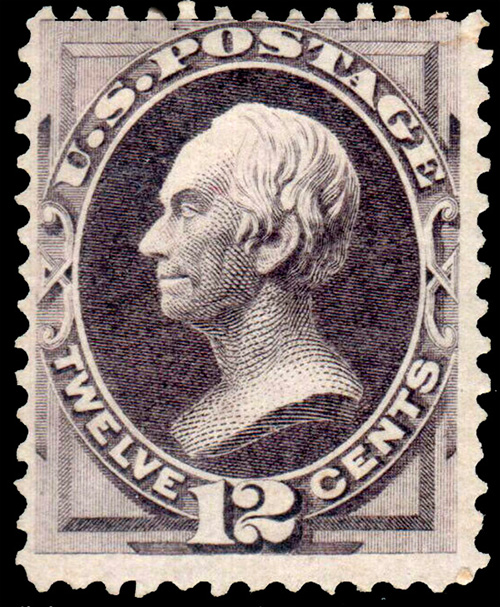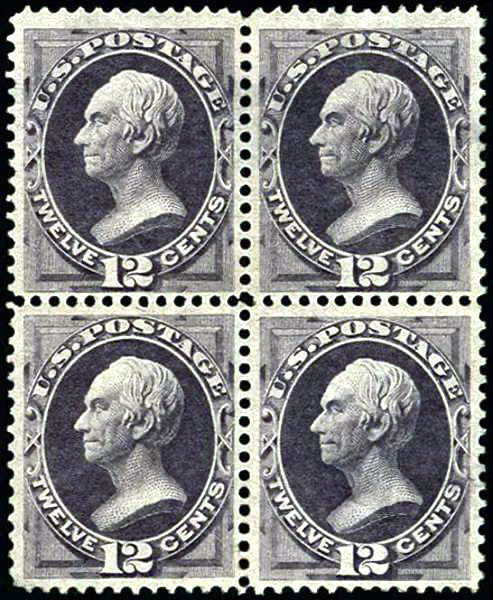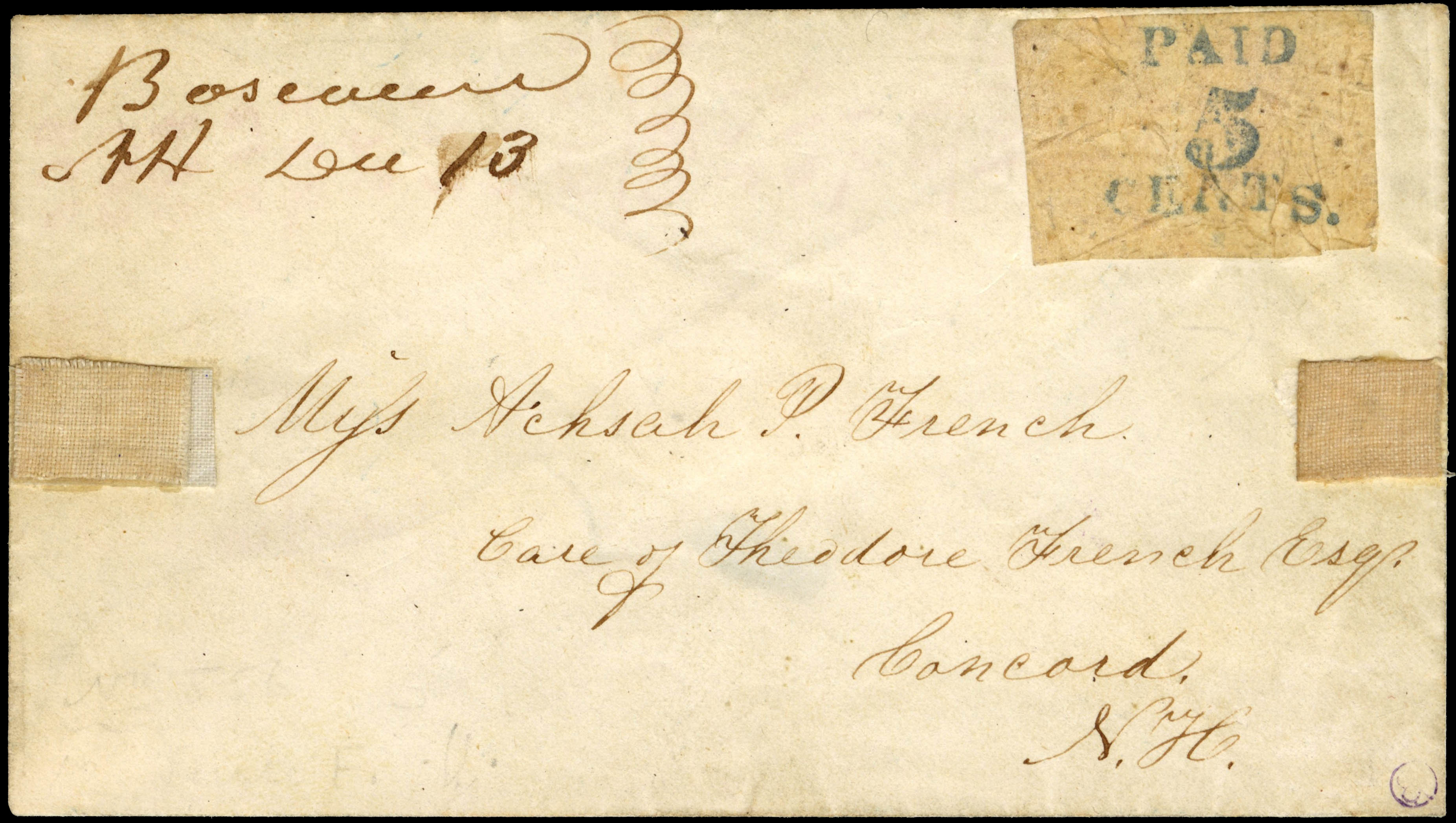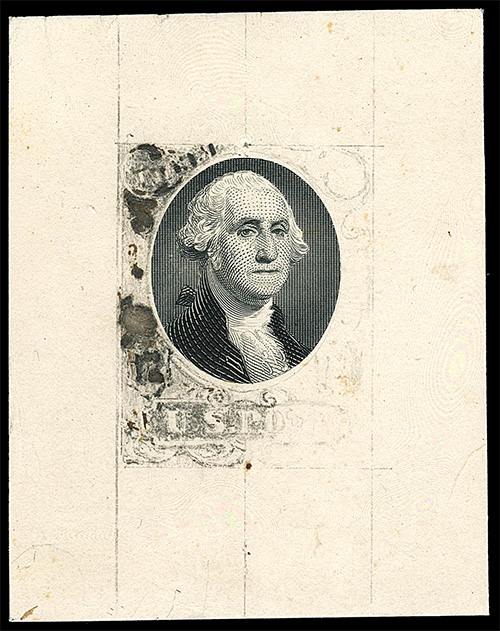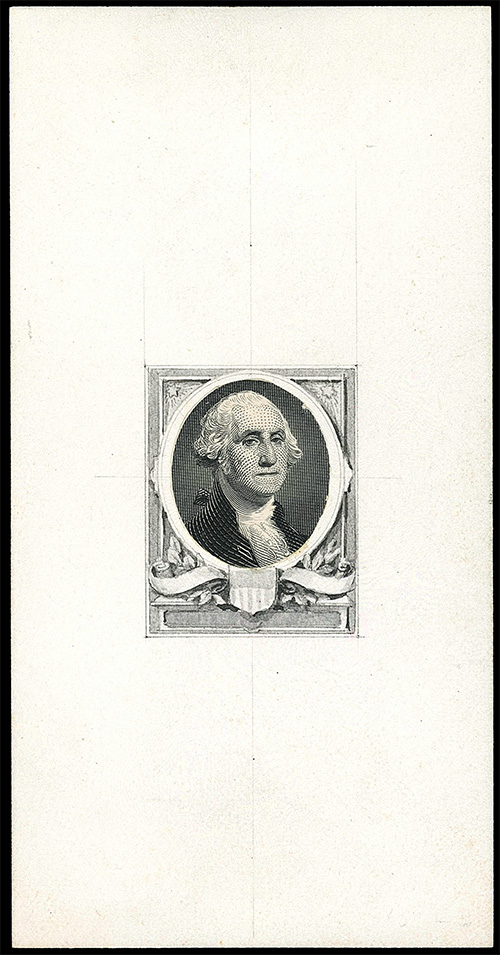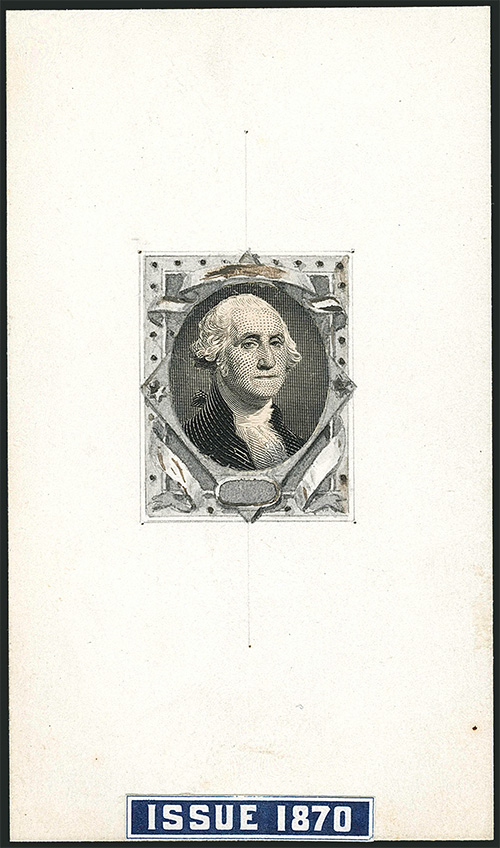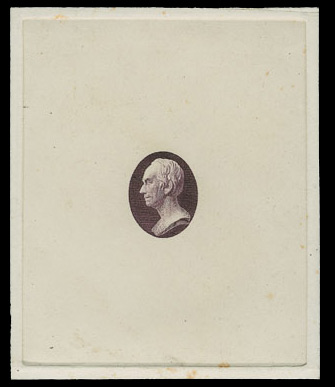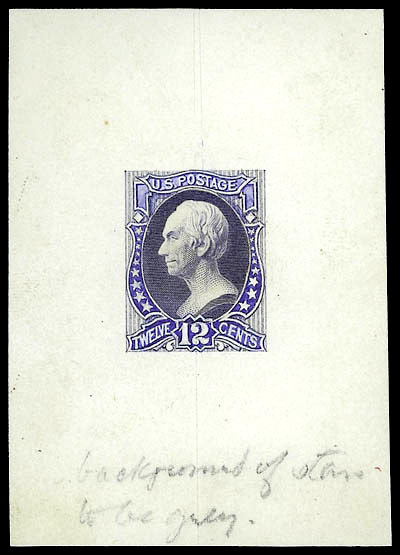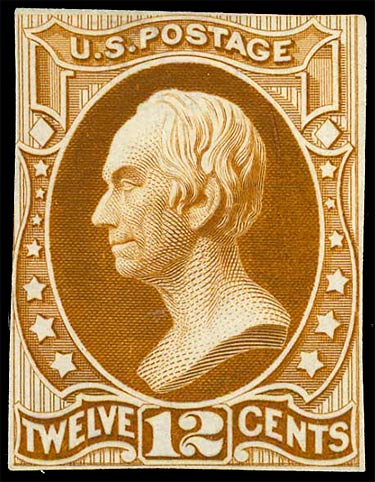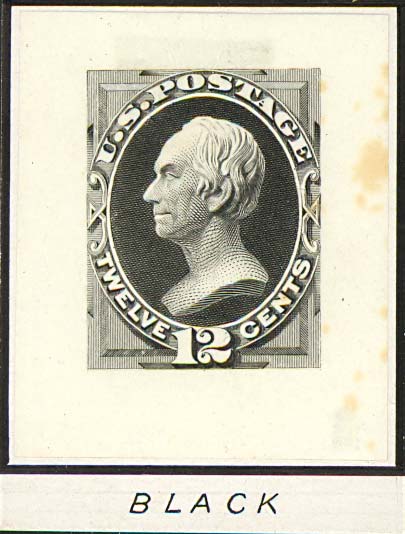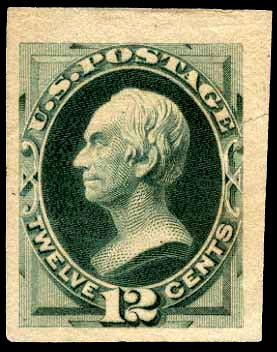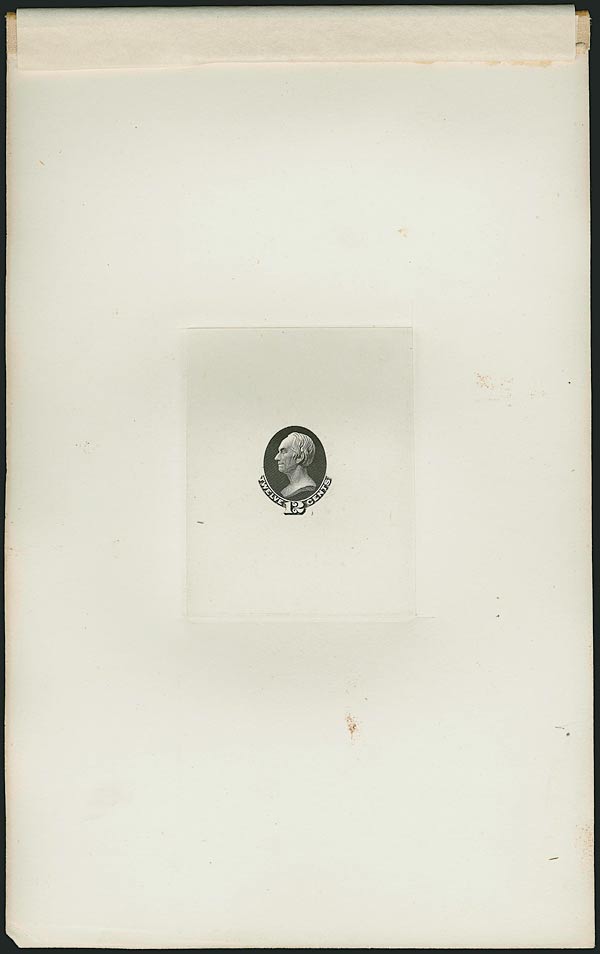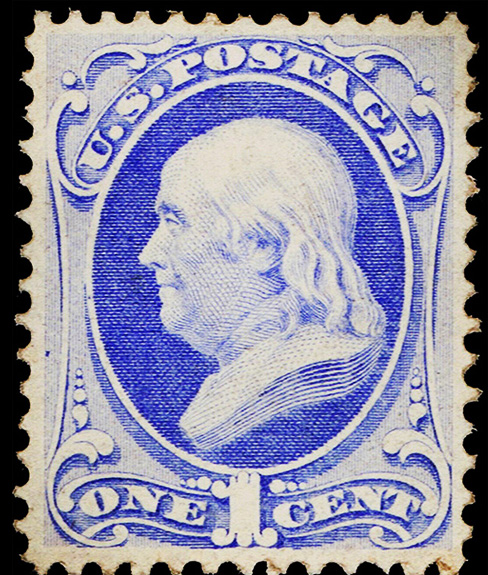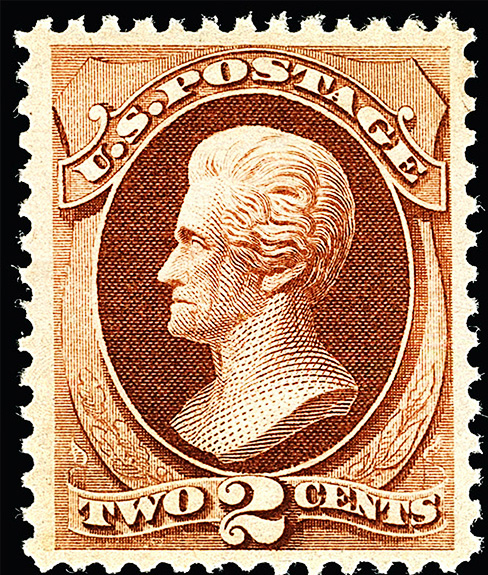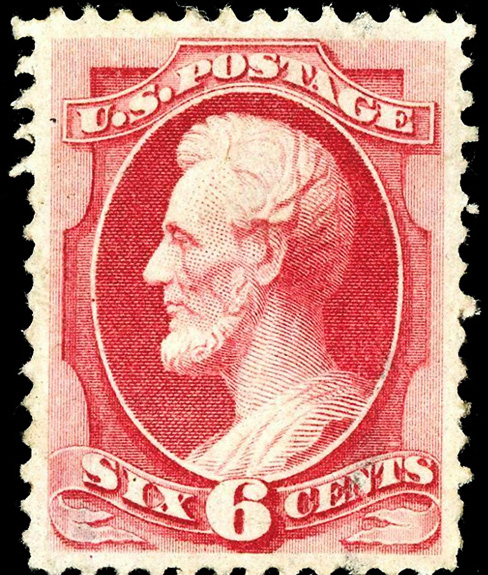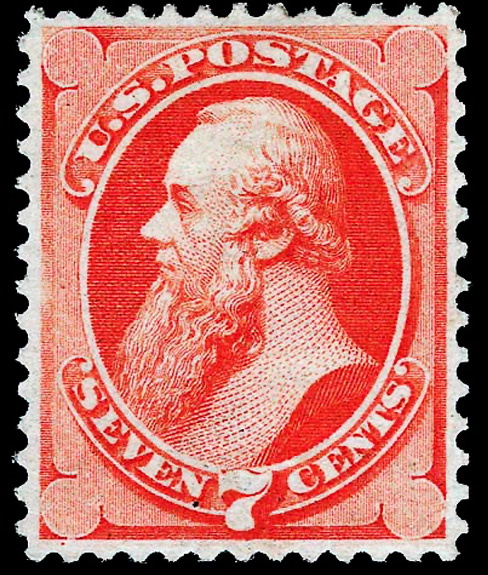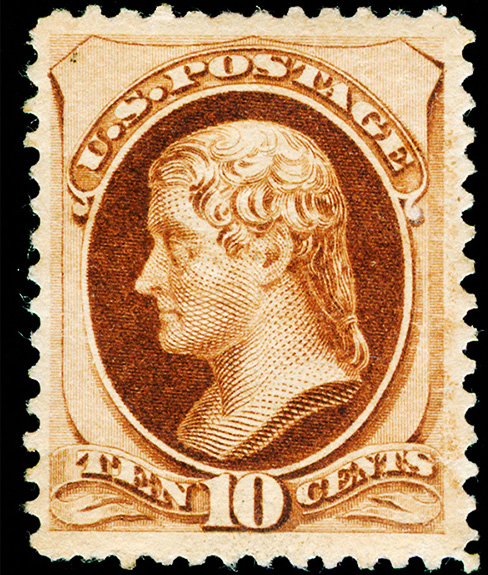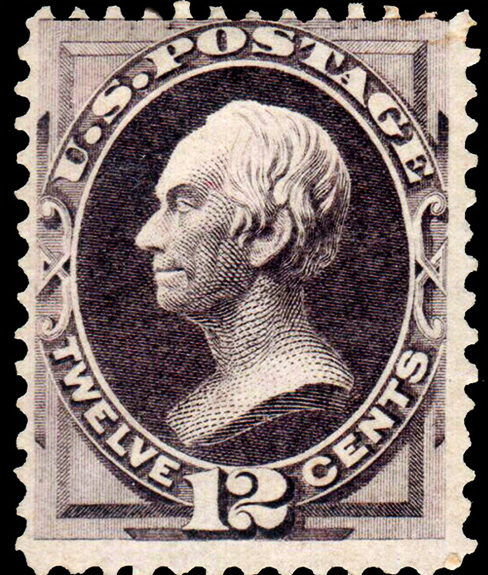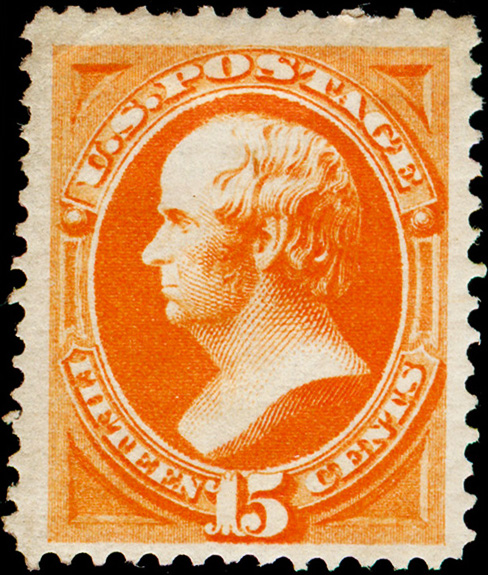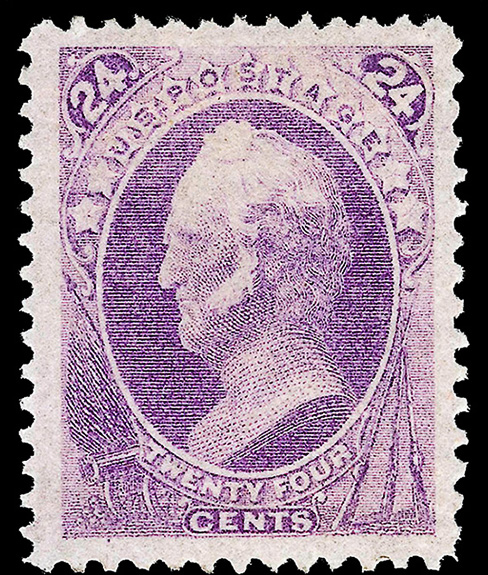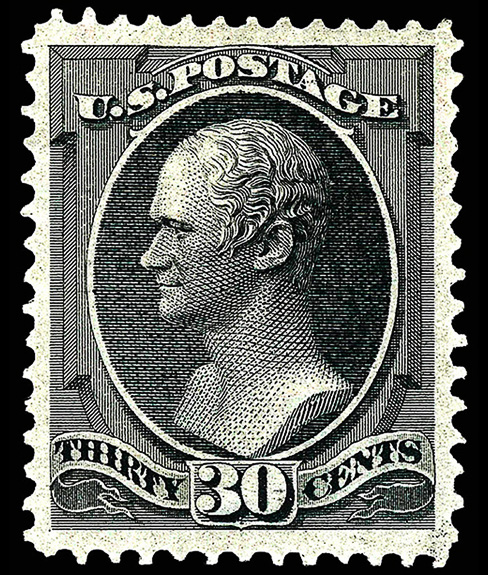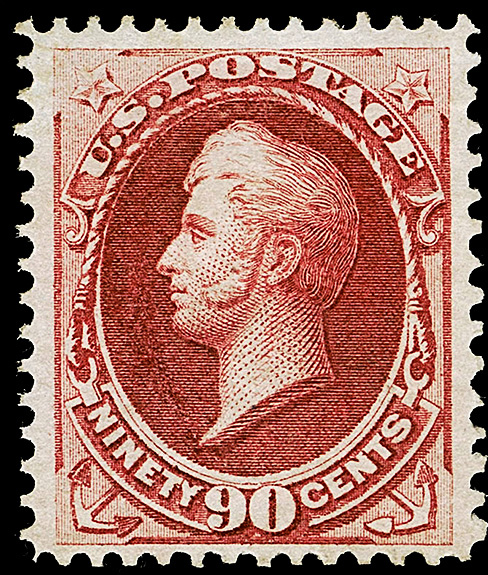Basic Info
12¢
Violet, dull violet and dark violet
Type of Paper: Hard white wove paper, thin to medium thick
Subject: Henry Clay
Number issued: 3,890,000
Perforations: 12
Scott #: 151
Printer: National Bank Note Company
Earliest Documented Use: July 9, 1870
Value
Used
$20 - $30
No postmark with gum (MH)
$400 - $1,100
Full perfect gum, no postmark
no trace of stamp hinge mark (MNH)
$5,500 - $15,000
Fancy Cancels

The era of fancy cancels is coming to an end. For the 12¢ value, which was used primarily on mail to foreign destinations, the most common cancel are the geometric cancels of NY, discussed on the page for #146. However fancy cancels still do appear, this one being a barrel of GIN.
Earliest Date of Use
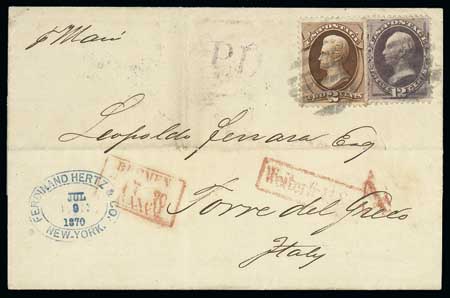
The earliest known date of use of #151 is July 9th, 1870, as shown above
The design inspiration
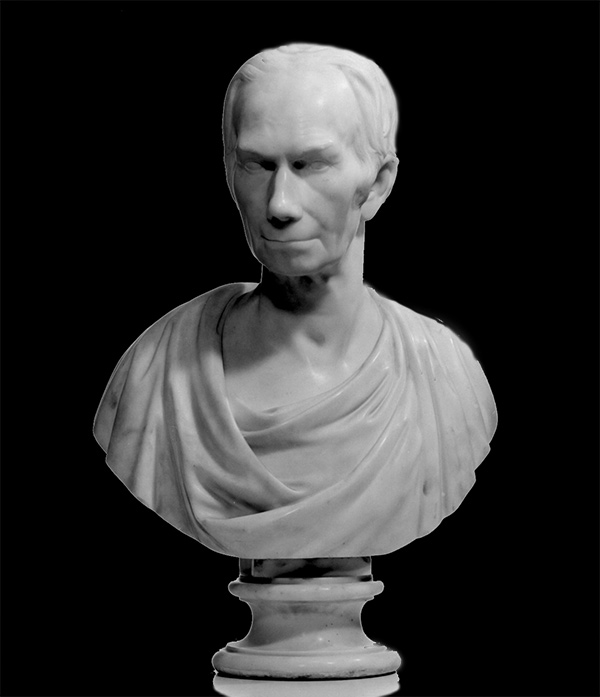
The vignette design was derived by Joel Hart's marble bust of Henry Clay, now situated in the Brooklyn Museum, New York
#151 Characteristics
The paper
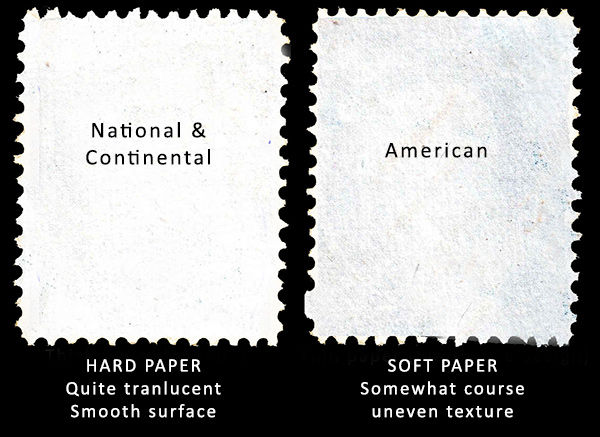
#151 is printed on hard white wove paper, thin to medium thick.
Hard paper was used by the National Bank Note Company and the Continental Bank Note Company. Soft paper was used by the American Bank Note Company,
The hard paper of the Bank Note issues is fairly white, perhaps it might better be called grayish white or sometimes a somewhat bluish white, while the soft paper seems slightly yellowish when compared with the hard paper.
Soft paper has a looser weave and more porous paper than hard paper, so it feels softer, displays a mesh or weave when viewed by holding the stamp between your eyes and light so that you are looking “through” the stamp.
Some people can also ID hard paper be “flicking” the edges and thereby “feeling” the stiffness of the paper versus the feel of soft paper if flicked in the same way. There's more of a snap to the hard paper.
On high magnification the perforation tips on soft paper will have more strands of paper sticking out than hard paper.
Soft paper is fairly dead looking under a long wave UV light ( (briefly and from a reasonable distance in a darkened room) while hard paper reflects more light. If reference copies of stamp designs known only on hard paper or soft paper are viewed under UV light, the difference in paper brightness should be apparent.
For a reference stamp obtain the inexpensive 1861 3¢ (#65), it is only available in hard paper.
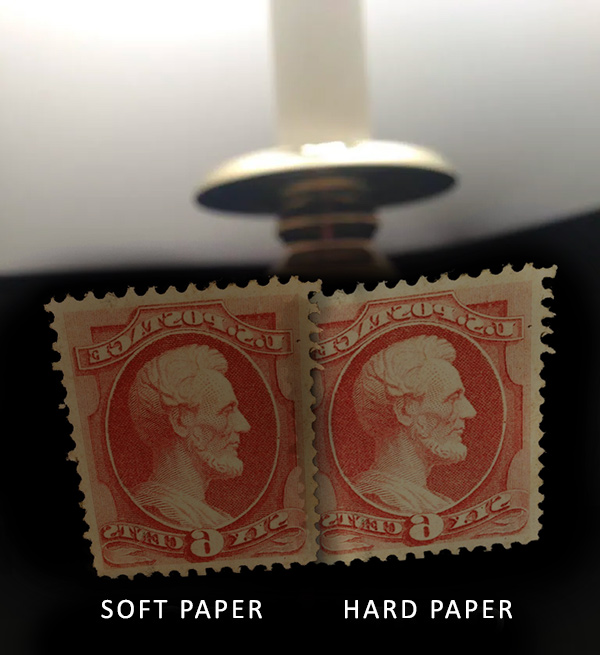
A simple test is to hold a stamp to a lamp, you will see the hard paper is more translucent.
The Secret Mark
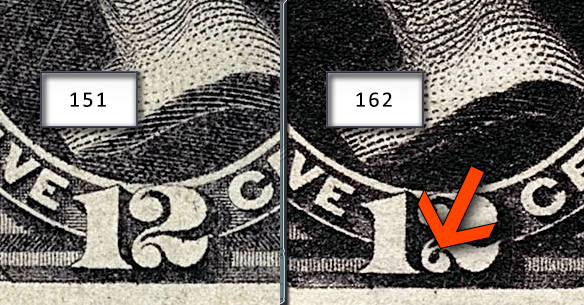
Look for the curl in the bottom of the number 2 of 12. If you see this 'secret mark' shown above you have a copy of #162
Plate #'s
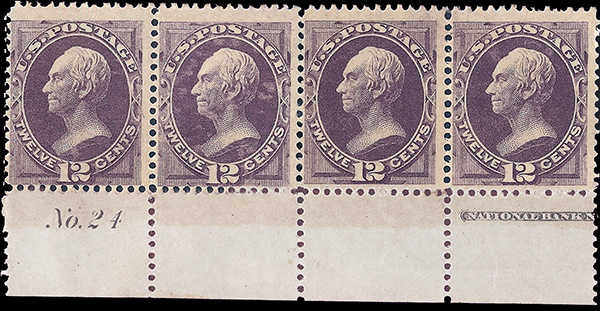
#151 was issued with the following plate #
Imprint and plate number
24
151-E5
Die essay on India, die sunk on card

